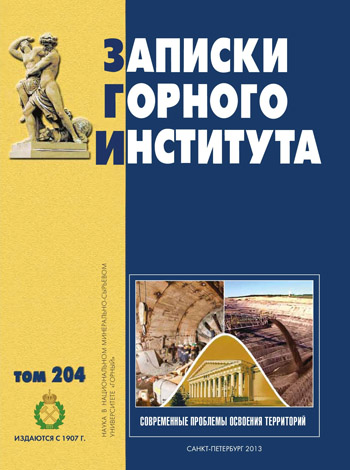Ultrasonic study of creep in polycrystalline rocks
About authors
- 1 — Ph.D., Dr.Sci. professor Saint-Petersburg State Electrotechnical University (LETI)
- 2 — post-graduate student Saint-Petersburg State Electrotechnical University (LETI)
- 3 — Ph.D. associate professor National Mineral Resources University (Mining University)
Abstract
The influence of the uniaxial static stress on creep in the polycrystalline rocks was studied. The study was performed using the original method of loaded complex oscillator. The theory of the method is proposed, The measurements were performed for polycrystalline khibinite. The advantages of the method before traditional methods for studying of physical mechanisms of creep are demonstrated.
Область исследования:
(Archived) Mine survey
Keywords:
polycrystalline rocks
nonlinear elasticity
creep
ultrasonic control
static stress
ultrasonic method
loaded complex oscillator
References
- PoirierJ.-P. Creep of crystals. High-temperature deformation processes in metals, ceramics and minerals. Moscow: Mir, 1988. 287 p.
- Tsaplev V.M. Nonlinear Properties and Creep in Piezoceramics. Saint Petersburg: Pub. house of the North-West State Technical University. 2003. 306 p.
- Read ТА. Internal Friction of Rocks // Phys. Re-view. 1938. Vol.54. P.389-395.
- Read T.A. Internal Friction of Single Metal Crystals // Phys. Review. 1940. Vol.58. N 4. P.371-380.
Similar articles
Modelling of process of liquidation of underground emptinesses in the conditions of technogenic activation
2013 A. A. Shubin
Application of automated software system «PRESS 3D URAL» for predicting bump hazard zones parameters and discharge borehole well in advance of the ore deposit and pillars in difficult geomechanical conditions
2013 D. V. Sidorov
